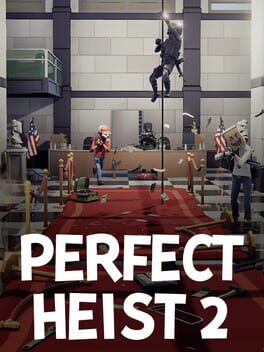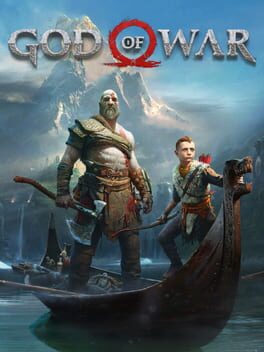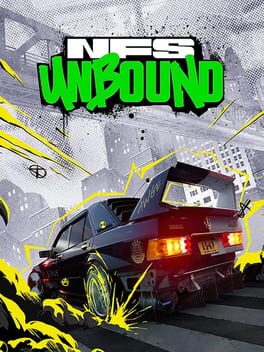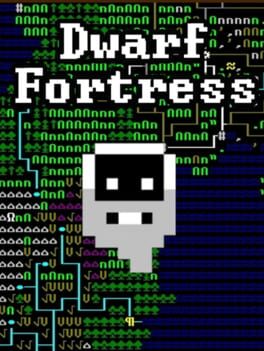jobosno
BACKER
This review contains spoilers
I've been doing a repeat run of The Friends of Ringo Ishikawa alongside a friend of mine who's been playing for the first time, Discord streaming his playthrough. This particular friend sends Ringo to class every day without fail and pushes the mortal human's ability to stay awake just to cram in as much studying/exercise as possible. He is - by the game's standards - richer than god, and yet he routinely risks Ringo's wellbeing to loot random enemies in the world for truly pathetic amounts of money, usually less than 50 yen. He is as mystified by my playthrough as I am by his: if his Ringo is about making numbers go up, mine is about the intangibles. I have not purposely improved a single skill that the game measures. My Ringo is a voracious reader, but makes no special effort to dedicate time to employment or education - not unless it helps him buy books.
I suppose I'm the one with the aberrant playstyle. The experienced gamer knows that more often than not, filling every spare second with stuff pays off - more XP, more money, more NPC affection, etc. But I know how this whole thing ends. I know that Ringo Ishikawa is stubborn. You can study all you want, but he will never let his teacher read his essay to the class. You can make him read Anna Karenina and Rumble Fish and Winesburg, Ohio and Confessions of a Mask and by the time you reach the only conversation in the game where he discusses these books with someone else, it's pretty clear that Ringo is not "in it" to brag about what he read or watched or played or did. He speaks brusquely, frequently teases his closest friends, and maintains a kind of... firm kindness with acquaintances. It feels somehow appropriate to have this stubbornly principled teenage delinquent skip school to read The Brothers Karamazov in a single sitting before declaring "I'd need to re-read it a few times to let it all sink in. A powerful read."
The game is going to start laying out the hints pretty early - Ringo's friends are becoming their own people, and while the gang is ostensibly still together, nobody's heart is really in it anymore. With this, your time is limited.
With this - this realization - how do you spend your time? Watching my friend trek all the way to school and back feels like reaching that point in a conversation where you realize that your brain is just not wired in a way that allows you to fully relate to the other person. Their perspective is too alien, their values too different. Perhaps you can understand the thoughts that lead them to their conclusion, but the idea of your own brain producing those same thoughts feels... wrong. Improbable.
Why does my Ringo read? If I'm honest with you, it's not for him. When you make Ringo read, he sits down, a page counter appears above his head, and you watch it tick up as the day passes - no fast forwards, no special music. Ringo reads for the same reason that he and his friends will sometimes stop in the park, or in the rice fields outside of town, or on the balcony of his apartment, smoking and having conversations that only they can hear. He does it because it lets me linger in the empty space, because it makes me feel overwhelmingly present in those moments. And when you sit there with them, maybe you can push it to the back of your mind that Ken probably won't join any more of your fights, or that Masaru keeps asking you for money and never explains why. Those precious seconds where the gang is still together stretch out into minutes - but no more than that - and you have to move on.
As of the time of this writing, my friend still has not finished the game. It's actually been almost a month at this point, and there's a solid possibility he may not return to it. I won't push him. Maybe he didn't like to linger in those moments like I do. Maybe he moved on, moved past the gang, maybe his Ringo grows up. Perhaps he'll enjoy it better that way: as a little slice of life where everything was still just fine - not perfect, but fine. The last thing his Ringo does is drag his friends to support Goro's newfound passion for theater. My Ringo?
My Ringo boards the train alone.
I suppose I'm the one with the aberrant playstyle. The experienced gamer knows that more often than not, filling every spare second with stuff pays off - more XP, more money, more NPC affection, etc. But I know how this whole thing ends. I know that Ringo Ishikawa is stubborn. You can study all you want, but he will never let his teacher read his essay to the class. You can make him read Anna Karenina and Rumble Fish and Winesburg, Ohio and Confessions of a Mask and by the time you reach the only conversation in the game where he discusses these books with someone else, it's pretty clear that Ringo is not "in it" to brag about what he read or watched or played or did. He speaks brusquely, frequently teases his closest friends, and maintains a kind of... firm kindness with acquaintances. It feels somehow appropriate to have this stubbornly principled teenage delinquent skip school to read The Brothers Karamazov in a single sitting before declaring "I'd need to re-read it a few times to let it all sink in. A powerful read."
The game is going to start laying out the hints pretty early - Ringo's friends are becoming their own people, and while the gang is ostensibly still together, nobody's heart is really in it anymore. With this, your time is limited.
With this - this realization - how do you spend your time? Watching my friend trek all the way to school and back feels like reaching that point in a conversation where you realize that your brain is just not wired in a way that allows you to fully relate to the other person. Their perspective is too alien, their values too different. Perhaps you can understand the thoughts that lead them to their conclusion, but the idea of your own brain producing those same thoughts feels... wrong. Improbable.
Why does my Ringo read? If I'm honest with you, it's not for him. When you make Ringo read, he sits down, a page counter appears above his head, and you watch it tick up as the day passes - no fast forwards, no special music. Ringo reads for the same reason that he and his friends will sometimes stop in the park, or in the rice fields outside of town, or on the balcony of his apartment, smoking and having conversations that only they can hear. He does it because it lets me linger in the empty space, because it makes me feel overwhelmingly present in those moments. And when you sit there with them, maybe you can push it to the back of your mind that Ken probably won't join any more of your fights, or that Masaru keeps asking you for money and never explains why. Those precious seconds where the gang is still together stretch out into minutes - but no more than that - and you have to move on.
As of the time of this writing, my friend still has not finished the game. It's actually been almost a month at this point, and there's a solid possibility he may not return to it. I won't push him. Maybe he didn't like to linger in those moments like I do. Maybe he moved on, moved past the gang, maybe his Ringo grows up. Perhaps he'll enjoy it better that way: as a little slice of life where everything was still just fine - not perfect, but fine. The last thing his Ringo does is drag his friends to support Goro's newfound passion for theater. My Ringo?
My Ringo boards the train alone.
2023
Playing Hi-Fi Rush feels like reading the first volume of a comic about a brand new superhero, unburdened by expectations.
There's such an obvious, whole-hearted commitment to creating a world that runs on music that I found myself bobbing my head and tapping my foot to literally nothing an hour after I put this one down. Rhythm is so thoroughly baked into this game's DNA that, after a certain point, it becomes more difficult to do things off beat than on it. It's got charm and earnestness that quiets my impulse to nitpick. Everything is music in some way, and every element snaps into place on a beat - UI elements, footsteps, enemy attacks, YOUR attacks, item pickups. Cohesive and confident enough that I would almost believe it if you told me it was somehow an influence on every rhythm genre hybrid that came before it. Feels like a game from 3 hardware generations ago, and I mean that in the best way possible.
There's such an obvious, whole-hearted commitment to creating a world that runs on music that I found myself bobbing my head and tapping my foot to literally nothing an hour after I put this one down. Rhythm is so thoroughly baked into this game's DNA that, after a certain point, it becomes more difficult to do things off beat than on it. It's got charm and earnestness that quiets my impulse to nitpick. Everything is music in some way, and every element snaps into place on a beat - UI elements, footsteps, enemy attacks, YOUR attacks, item pickups. Cohesive and confident enough that I would almost believe it if you told me it was somehow an influence on every rhythm genre hybrid that came before it. Feels like a game from 3 hardware generations ago, and I mean that in the best way possible.
I see people use words like "childlike joy" a lot, but I don't remember the last time I've seen a game so suited to it before playing the remake of 2004's Katamari Damacy. Katamari Damacy asks that you maneuver an increasingly large ball around a level where smaller objects adhere to the ball - the katamari - until you have enough volume to roll up new objects. It is perfectly tactile: in primarily using the analog sticks, you are not the ball - you are the diminutive prince, forced to settle for merely corralling the momentum of a katamari that is often twice your size before you've picked up even a single object.
It's not a frictionless experience, but Katamari Damacy's developers are judicious in how, when, and how much they attempt to toy with the player. For the most part, they're rooting for you: objects are generally placed with those of a comparable size, allowing you to build up some steam before hitting a conspicuous, illogical wall of bicycles or traffic cones or what-have-you that blocks the path ahead - a gentle, guiding, parent-like hand that asks you to spend a little longer working with what you've already got before picking up some new toys. And boy howdy will you pick up some new toys.
Start with thumbtacks, then move to erasers, then pick up a toothbrush that nearly prevents your katamari from rolling in certain directions. In the span of minutes, cars become as useless as thumbtacks as you pluck buildings from the ground, islands from the ocean, and clean the sky of its clouds. You have completed your goal of making something as big as you possibly can during your time at recess, and how do you feel as you roll around the empty ocean? Satisfied? Bored? Hungry for more? Do you feel a tinge of regret at having undone it all? That last one is me speaking from my own experience, but Katamari Damacy itself does not judge you - it'll make a magnificent star, after all.
It's not a frictionless experience, but Katamari Damacy's developers are judicious in how, when, and how much they attempt to toy with the player. For the most part, they're rooting for you: objects are generally placed with those of a comparable size, allowing you to build up some steam before hitting a conspicuous, illogical wall of bicycles or traffic cones or what-have-you that blocks the path ahead - a gentle, guiding, parent-like hand that asks you to spend a little longer working with what you've already got before picking up some new toys. And boy howdy will you pick up some new toys.
Start with thumbtacks, then move to erasers, then pick up a toothbrush that nearly prevents your katamari from rolling in certain directions. In the span of minutes, cars become as useless as thumbtacks as you pluck buildings from the ground, islands from the ocean, and clean the sky of its clouds. You have completed your goal of making something as big as you possibly can during your time at recess, and how do you feel as you roll around the empty ocean? Satisfied? Bored? Hungry for more? Do you feel a tinge of regret at having undone it all? That last one is me speaking from my own experience, but Katamari Damacy itself does not judge you - it'll make a magnificent star, after all.
2018
Did anyone else try the multiplayer in this? Not the sniper assassin minigame, but the actual, on-the-ground Agent 47 vs. somehow paler Agent 47 mode where you had to race an opponent to a target. It's not in the same realm of quality as the main game, but how could it be? These levels aren't designed for multiplayer, aren't designed for semi-random targets that wander around areas where the usual target is hunkered down, aren't designed to exist in an ecosystem where you can't hoard 600,000 muffins. That being said, I had some actual-ass fun playing it, which is more than I can say for most multiplayer affairs in recent years.
It only existed in the first two non-tutorial levels, Miami and Santa Fortuna - one of which is a pretty solid level, the other is among the worst in the trilogy, notable in the campaign for spreading 3 targets across three thirds of a map that is only one-third interesting. Two players spawn in with no equipment and are drip-fed a series of targets that do not normally exist in the level, and you are given a point if you can take them out without being detected, at which point the other player is given a couple seconds to do the same or forfeit the point. Equipment spawns in chests around the level - the first player gets their pick of three items, leaving only two for the other player.
While I never for one second considered playing this with an internet stranger, I did play tens of hours of this with an old high school friend, during which we took this game - a game whose single-player mode we had independently reduced to a digital chore list, noting each item's placement and coldly, surgically eliminating targets in increasingly efficient ways - and found new ways to plumb the depths of the other person's sociopathy. That's so weird that you don't have a silenced pistol yet, I've got six of them already. Are you waiting carefully, calculating the best time to poison the target? You have five seconds, I just gunned him down in broad daylight so you couldn't get the point. I hope you have the announcer voice off because I'm killing every single person in the level so that every target kill is undetected. I'm sprinting around behind you, throwing coins into your world so you can't play the game.
For some reason, IOI gave up on the unenviable task of adapting these levels for a multiplayer game mode that four people played, each of whom offered a resounding... "eh, not really my thing". Really a shame, to be honest, because it was a spectacularly interesting shitshow to play, and I think it only would've been more so if we got a chance to see levels like Mumbai or Whittleton Creek. I never expected Hitman to have that kind of up-too-late-during-the-sleepover multiplayer experience - the kind where you spend more time fucking over the other person and laughing than actually trying to play the game - but I've tasted it, and now I need more.
In all seriousness, it was intriguing to see IOI's attempts at tweaking these levels for non-standard game modes. Contracts mode is kind of self-moderating, since players ideally pick only the contracts that match the exact level of challenge they want. A real-time versus mode is a whole different beast, and while this was a decent stab at creating an alternate game mode, I'm mostly curious to see what lessons IOI takes from this for things like their upcoming Freelancer mode update for Hitman 3 or the as-yet-untitled James Bond game they're working on. In fact, I suspect that the success of Freelancer will largely depend on the lessons that they take from this. IOI have toyed with using limited replays to create stakes with the Elusive Target system, a system that still uses the traditional setup of giving each target a single, scripted path through the level. Creating stakes by having the level itself change every time you return is a different kind of challenge, and this alternate game mode is really the only thing I can think of that's similar within the Hitman series.
One the one hand, IOI has made a lot of baffling decisions over the years - I think Absolution is the easiest example of this, with IOI leadership openly admitting in interviews that they were chasing trends they had identified in other games to try and make Hitman more "modern". On the other, they seem to have really locked their focus in recent years on what's truly crucial to creating a Hitman game and have used their missteps in previous games/modes to make the core experience stronger. It's easy to forget that something that feels like a natural fit - the use of "Instinct" in the trilogy - began as a resource bar in Absolution that often made things harder to see and would show you the exact point on the map someone was walking to. Most of the PVP mode's most severe weaknesses have already been removed from the equation by virtue of Freelancer not being PVP, so I've got some confidence that IOI will be able to make something worthwhile out of the update. Not much left to do now but wait and see.
It only existed in the first two non-tutorial levels, Miami and Santa Fortuna - one of which is a pretty solid level, the other is among the worst in the trilogy, notable in the campaign for spreading 3 targets across three thirds of a map that is only one-third interesting. Two players spawn in with no equipment and are drip-fed a series of targets that do not normally exist in the level, and you are given a point if you can take them out without being detected, at which point the other player is given a couple seconds to do the same or forfeit the point. Equipment spawns in chests around the level - the first player gets their pick of three items, leaving only two for the other player.
While I never for one second considered playing this with an internet stranger, I did play tens of hours of this with an old high school friend, during which we took this game - a game whose single-player mode we had independently reduced to a digital chore list, noting each item's placement and coldly, surgically eliminating targets in increasingly efficient ways - and found new ways to plumb the depths of the other person's sociopathy. That's so weird that you don't have a silenced pistol yet, I've got six of them already. Are you waiting carefully, calculating the best time to poison the target? You have five seconds, I just gunned him down in broad daylight so you couldn't get the point. I hope you have the announcer voice off because I'm killing every single person in the level so that every target kill is undetected. I'm sprinting around behind you, throwing coins into your world so you can't play the game.
For some reason, IOI gave up on the unenviable task of adapting these levels for a multiplayer game mode that four people played, each of whom offered a resounding... "eh, not really my thing". Really a shame, to be honest, because it was a spectacularly interesting shitshow to play, and I think it only would've been more so if we got a chance to see levels like Mumbai or Whittleton Creek. I never expected Hitman to have that kind of up-too-late-during-the-sleepover multiplayer experience - the kind where you spend more time fucking over the other person and laughing than actually trying to play the game - but I've tasted it, and now I need more.
In all seriousness, it was intriguing to see IOI's attempts at tweaking these levels for non-standard game modes. Contracts mode is kind of self-moderating, since players ideally pick only the contracts that match the exact level of challenge they want. A real-time versus mode is a whole different beast, and while this was a decent stab at creating an alternate game mode, I'm mostly curious to see what lessons IOI takes from this for things like their upcoming Freelancer mode update for Hitman 3 or the as-yet-untitled James Bond game they're working on. In fact, I suspect that the success of Freelancer will largely depend on the lessons that they take from this. IOI have toyed with using limited replays to create stakes with the Elusive Target system, a system that still uses the traditional setup of giving each target a single, scripted path through the level. Creating stakes by having the level itself change every time you return is a different kind of challenge, and this alternate game mode is really the only thing I can think of that's similar within the Hitman series.
One the one hand, IOI has made a lot of baffling decisions over the years - I think Absolution is the easiest example of this, with IOI leadership openly admitting in interviews that they were chasing trends they had identified in other games to try and make Hitman more "modern". On the other, they seem to have really locked their focus in recent years on what's truly crucial to creating a Hitman game and have used their missteps in previous games/modes to make the core experience stronger. It's easy to forget that something that feels like a natural fit - the use of "Instinct" in the trilogy - began as a resource bar in Absolution that often made things harder to see and would show you the exact point on the map someone was walking to. Most of the PVP mode's most severe weaknesses have already been removed from the equation by virtue of Freelancer not being PVP, so I've got some confidence that IOI will be able to make something worthwhile out of the update. Not much left to do now but wait and see.
People talking about this game sound like they're fondly reminiscing about clocking in at the steel mill so I guess I now understand that look people give me when they ask what Victoria 3 is
2021
Surprisingly this is one of the best multiplayer stealth games I've played in a minute, in a genre that's got more than a few flops in it. Nothing quite like playing this with 2-6 friends in a continually evolving test to determine who is most inventive with the limited tools given to each of the forty classes in this game.
I can't help but feel like there's a delicate balance that's been struck here that could be destroyed in its entirety if characters continue to be added at this breakneck pace, but as things stand there's a cohesive set of mechanics where the team you're on always feels like it's stretched slightly too thin for a plan to go off perfectly. Put that way, it sounds miserable, but it's hard to capture (in text) the thrill of having it come down to a 1v1 in which a thief has trapped himself in a locked-room murder mystery, the entire round determined by the disguised thief's ability to impersonate an AI convincingly enough that the cop attacks the wrong person.
It's made all the more enjoyable if both teams are in the same Discord call, forced to type if they want to team chat. Determining which knowledge should be shared aloud and revealing your hand at the end of the round definitely adds an element to this game that enhances the whole experience, another layer of tension and an opportunity to brag about your master plan so everyone's techniques can evolve further.
I can't help but feel like there's a delicate balance that's been struck here that could be destroyed in its entirety if characters continue to be added at this breakneck pace, but as things stand there's a cohesive set of mechanics where the team you're on always feels like it's stretched slightly too thin for a plan to go off perfectly. Put that way, it sounds miserable, but it's hard to capture (in text) the thrill of having it come down to a 1v1 in which a thief has trapped himself in a locked-room murder mystery, the entire round determined by the disguised thief's ability to impersonate an AI convincingly enough that the cop attacks the wrong person.
It's made all the more enjoyable if both teams are in the same Discord call, forced to type if they want to team chat. Determining which knowledge should be shared aloud and revealing your hand at the end of the round definitely adds an element to this game that enhances the whole experience, another layer of tension and an opportunity to brag about your master plan so everyone's techniques can evolve further.
2021
2022
A hard one to rate, because it's got a much better onboarding process than its older sibling (i.e. working the economy no longer means wrestling with this screen), but the difference between treading water and seeing real success is understanding when the simplified menus are betraying you.
I've been playing the Vicky series long enough to have met some of my most long-lasting friends as a result, but this isn't the case for all the players who are picking up the shiny new Paradox game. You can generally stay afloat by playing the tutorial and clicking the options that have the biggest, greenest "predicted profit" numbers next to them - good! It's good that people who don't know how to sort through all the info can pick this up and play with their friends without immediately crashing and burning. However...
There's a lot being calculated here, and the big "predicted profit" numbers are only so useful unless you understand what they represent. I've heard many complaints from friends who have picked this up for the first time, clicked all the correct Big Green Buttons, only to assume that it was a bug when their attempts to cut costs by gutting the military result in an economic crisis. All the buttons and numbers that you'd need to understand the economic crisis are present, but I don't think the game does a good enough job of indicating where they are and when you'd use them. This (combined with the UI simplicity) deprives the unaware player of a great deal of gameplay depth, to the point where my friends picking up Vicky for the first time describe it as "a game you watch more than you play".
If you do know what you're looking at, though, and you like the idea of "building tall" rather than "building wide" with your empires, this game will really sink its hooks into you. Learning the intricacies of Vicky 3 means you'll spend a lot less time scrolling Twitter with the game on max speed and a lot more time engaged with the game's systems, poking through the data provided to determine how you'll meet your long-term goals. The feeling of satisfaction you get from a Victoria 3 game is not dissimilar from the fun you have playing Factorio or Satisfactory - knowing a complex system of supply chains like the back of your hand, continually tweaking it to become more efficient, to grow bigger, to provide a better standard of living for the people in your country.
I don't really have a neat way to put a little bow on this, but I wanted to throw this review out there so people understand that this is NOT Crusader Kings 3. It's one of those games where you have to get really familiar with it for everything to click if you're not madly in love with the setting, but it's also a pain in the ass to become familiar with everything here. Paradox have really put forth a solid, earnest attempt at cleaning this up so it resembles a game more than an Excel spreadsheet (the map is fucking gorgeous!) but there's really only so much you can do with a product like this. At some point, you either bounce right off of this, settle for clicking Big Green Buttons, or you sit down with a YouTube video or friend (or your knowledge from economics classes) and go "okay, so while it says you'll lose a lot of money by making this switch, you're producing a LOT more oil, which drives the price down, meaning other businesses that rely on it are more profitable, and since you've got worker cooperatives, those dividends go to the workers which (with graduated taxation) are taxable at a higher rate than ordinary wages, which mea--"
I've been playing the Vicky series long enough to have met some of my most long-lasting friends as a result, but this isn't the case for all the players who are picking up the shiny new Paradox game. You can generally stay afloat by playing the tutorial and clicking the options that have the biggest, greenest "predicted profit" numbers next to them - good! It's good that people who don't know how to sort through all the info can pick this up and play with their friends without immediately crashing and burning. However...
There's a lot being calculated here, and the big "predicted profit" numbers are only so useful unless you understand what they represent. I've heard many complaints from friends who have picked this up for the first time, clicked all the correct Big Green Buttons, only to assume that it was a bug when their attempts to cut costs by gutting the military result in an economic crisis. All the buttons and numbers that you'd need to understand the economic crisis are present, but I don't think the game does a good enough job of indicating where they are and when you'd use them. This (combined with the UI simplicity) deprives the unaware player of a great deal of gameplay depth, to the point where my friends picking up Vicky for the first time describe it as "a game you watch more than you play".
If you do know what you're looking at, though, and you like the idea of "building tall" rather than "building wide" with your empires, this game will really sink its hooks into you. Learning the intricacies of Vicky 3 means you'll spend a lot less time scrolling Twitter with the game on max speed and a lot more time engaged with the game's systems, poking through the data provided to determine how you'll meet your long-term goals. The feeling of satisfaction you get from a Victoria 3 game is not dissimilar from the fun you have playing Factorio or Satisfactory - knowing a complex system of supply chains like the back of your hand, continually tweaking it to become more efficient, to grow bigger, to provide a better standard of living for the people in your country.
I don't really have a neat way to put a little bow on this, but I wanted to throw this review out there so people understand that this is NOT Crusader Kings 3. It's one of those games where you have to get really familiar with it for everything to click if you're not madly in love with the setting, but it's also a pain in the ass to become familiar with everything here. Paradox have really put forth a solid, earnest attempt at cleaning this up so it resembles a game more than an Excel spreadsheet (the map is fucking gorgeous!) but there's really only so much you can do with a product like this. At some point, you either bounce right off of this, settle for clicking Big Green Buttons, or you sit down with a YouTube video or friend (or your knowledge from economics classes) and go "okay, so while it says you'll lose a lot of money by making this switch, you're producing a LOT more oil, which drives the price down, meaning other businesses that rely on it are more profitable, and since you've got worker cooperatives, those dividends go to the workers which (with graduated taxation) are taxable at a higher rate than ordinary wages, which mea--"
2019
Consider me a non-believer, I guess. Turns out a game/toy/tool that is mostly dependent on an AI churning out long strings of interesting and/or logically consistent text is a tad underwhelming. I purchased one of the turbo big-boy cool-kid tiers for a month just to see what the "real" versions of AID were capable of and I'm sorry to say I'm not reporting back on some mind-blowing main attraction.
It's probably a pretty neat tool to have if you're 1. stuck in a creative rut and want to throw some ideas at the wall, 2. just trying to create little vignettes, or 3. using it for shitposting, but I still think NovelAI has it beat on the first two. It's simply too easy to get this thing stuck going in circles or spitting out completely incoherent text, even with their "best" AI models. If you're trying to use it seriously to generate chunks of text more than a handful of sentences long, you're still going to be doing most of the legwork trying to wrangle the AI so it stays on course and editing it so it gives the right attributes to the right people.
--
I do think the developers have started to realize, though, that there's something good here, because there are AI Dungeon-related toys (The "Voyage" feature, only available to Premium tier 2 and higher) that are... actually kinda fun? The common theme here is taking advantage of 1. the AI models' ability to generate SHORT bits of text, and 2. its ability to take any situation and make it do a hard left out of nowhere.
"Medieval Problems" is overtly a clone of Reigns - you are presented with a short, simple problem, except in this circumstance you can type whatever you want in response. The AI here is designed to put up a little more resistance than the standard AID2 models, but the completely open-ended responses offer you plenty of opportunity to have some childish fun in the style of "insisting that you win rock, paper, scissors because you played 'gun'". Corrupt magistrate embezzling tax money? Send my 200 strong adult sons to beat the soul out of him.
"Loom" takes advantage of the wild derailments the AI model is capable of producing by taking your input and offering you several responses to choose from. Continue picking responses to advance the story, or return to an earlier prompt to create a sort of parallel timeline. These are all stored in a map on the left side of the screen and you can hop between them freely, moving these stories forward and abandoning them in equal measure until you've generated tens of increasingly erratic plotlines. It's classic AI Dungeon in a format that makes non sequiturs fun instead of frustrating.
--
Not really a review of AI Dungeon proper, of course, but I think it's worth pointing out the other things Latitude's doing that make the most of the AI's strengths while minimizing its weaknesses. These are still just toys and tools instead of full-fledged games at the moment, but it looks like they're planning on opening this up to third-party creators eventually and I'd be interested to see what people produce. With such a steep entry fee for this playground I don't think we're going to see any kind of viral success for anything hosted on Latitude's platform, but it wouldn't surprise me at all to see something in this vein crop up as an app (at a cheaper price point) and spread like wildfire.
It's probably a pretty neat tool to have if you're 1. stuck in a creative rut and want to throw some ideas at the wall, 2. just trying to create little vignettes, or 3. using it for shitposting, but I still think NovelAI has it beat on the first two. It's simply too easy to get this thing stuck going in circles or spitting out completely incoherent text, even with their "best" AI models. If you're trying to use it seriously to generate chunks of text more than a handful of sentences long, you're still going to be doing most of the legwork trying to wrangle the AI so it stays on course and editing it so it gives the right attributes to the right people.
--
I do think the developers have started to realize, though, that there's something good here, because there are AI Dungeon-related toys (The "Voyage" feature, only available to Premium tier 2 and higher) that are... actually kinda fun? The common theme here is taking advantage of 1. the AI models' ability to generate SHORT bits of text, and 2. its ability to take any situation and make it do a hard left out of nowhere.
"Medieval Problems" is overtly a clone of Reigns - you are presented with a short, simple problem, except in this circumstance you can type whatever you want in response. The AI here is designed to put up a little more resistance than the standard AID2 models, but the completely open-ended responses offer you plenty of opportunity to have some childish fun in the style of "insisting that you win rock, paper, scissors because you played 'gun'". Corrupt magistrate embezzling tax money? Send my 200 strong adult sons to beat the soul out of him.
"Loom" takes advantage of the wild derailments the AI model is capable of producing by taking your input and offering you several responses to choose from. Continue picking responses to advance the story, or return to an earlier prompt to create a sort of parallel timeline. These are all stored in a map on the left side of the screen and you can hop between them freely, moving these stories forward and abandoning them in equal measure until you've generated tens of increasingly erratic plotlines. It's classic AI Dungeon in a format that makes non sequiturs fun instead of frustrating.
--
Not really a review of AI Dungeon proper, of course, but I think it's worth pointing out the other things Latitude's doing that make the most of the AI's strengths while minimizing its weaknesses. These are still just toys and tools instead of full-fledged games at the moment, but it looks like they're planning on opening this up to third-party creators eventually and I'd be interested to see what people produce. With such a steep entry fee for this playground I don't think we're going to see any kind of viral success for anything hosted on Latitude's platform, but it wouldn't surprise me at all to see something in this vein crop up as an app (at a cheaper price point) and spread like wildfire.
2018
Feels like there's a decent enough narrative-focused game in here constantly getting distracted by what a prestige game should be. I feel like I'm shovelling sad dad story beats out from under a pile of AAA features that distract from the core experience. I don't want loot, I don't want to pick my axe moves and my axe handle and the enchantments on my axe handle and the material of my son's shirt, I don't want a faux single-shot gimmick (it's all rendered! it doesn't matter if it's a "single shot"!). It's all so overwhelmingly "game design by committee" that even things I wouldn't normally mind (puzzles, moveset customization) start to wear on me as well, because none of it matters. None of the gimmicks contribute to the story/setting, none of the customization matters because enemies aren't diverse enough to provide a meaningful test of your own skills/your Kratos' abilities.
Not sure Kratos would've put so much emphasis on the boy "not being ready" in the prologue if he had known just how much his own son was going to babysit him during this adventure.
I don't think less of people for enjoying this thing but I grow weary every time one of these movie games wins an award.
Not sure Kratos would've put so much emphasis on the boy "not being ready" in the prologue if he had known just how much his own son was going to babysit him during this adventure.
Bits and pieces of this are pretty interesting, and I'm happy to see (between this and Heat) those running the NFS series identify the open space for a racing game that leans hard into the spectacle of street racing. Heat felt like EA (and Ghost Games) dipping their toes in the water, and this feels more like jumping right in - a greater commitment to a street art aesthetic, streetwear, music (didn't really expect to hear clipping. on a Need for Speed soundtrack), the whole nine. Does it work? Kinda.
It's definitely the closest thing to NFS Underground that has existed since the release of those games, and I do genuinely believe that the cel-shaded style of the people (and some mid-race effects) works really well to give the game some character. There's still a feeling of sanding off the rough edges that might scare off the suits, but overall it feels like the developers have tried to make something that they think is cool, and they are a lot closer to the mark than most AAA games get. I do wish they cut back on the talking - especially notable is the fact that the game alludes to municipal politics WAY more than you'd expect from a game that is trying to be trendy, but if it surprises you that "the mayor fucking HATES racing" is a plot point in a Need for Speed game, then I'm not really sure what to tell you.
I don't really want to hype this up too much - your car typically feels like the tires are made of either ice or glue, the game itself often looks fuzzy due to the way effects/filters are used, and even gentle curves often require that you hit the brakes pretty hard - but the core is pretty interesting and I'd really like to see them try to build on what's here for future games. Right now the game simply cares too much to be truly cool, but they're on the right track for giving modern NFS an identity separate from other big-name racing series. I still kinda hate the way cars handle in the newer NFS iterations, but I'm seeing a lot of people offering praise for that specific element of the NFS Unbound experience, so maybe in a few years we'll see this franchise (re-)develop an even larger, dedicated audience of people who are less interested in sleek, unmodified hypercars and more interested in turning the car itself into a form of expression all its own.
It's definitely the closest thing to NFS Underground that has existed since the release of those games, and I do genuinely believe that the cel-shaded style of the people (and some mid-race effects) works really well to give the game some character. There's still a feeling of sanding off the rough edges that might scare off the suits, but overall it feels like the developers have tried to make something that they think is cool, and they are a lot closer to the mark than most AAA games get. I do wish they cut back on the talking - especially notable is the fact that the game alludes to municipal politics WAY more than you'd expect from a game that is trying to be trendy, but if it surprises you that "the mayor fucking HATES racing" is a plot point in a Need for Speed game, then I'm not really sure what to tell you.
I don't really want to hype this up too much - your car typically feels like the tires are made of either ice or glue, the game itself often looks fuzzy due to the way effects/filters are used, and even gentle curves often require that you hit the brakes pretty hard - but the core is pretty interesting and I'd really like to see them try to build on what's here for future games. Right now the game simply cares too much to be truly cool, but they're on the right track for giving modern NFS an identity separate from other big-name racing series. I still kinda hate the way cars handle in the newer NFS iterations, but I'm seeing a lot of people offering praise for that specific element of the NFS Unbound experience, so maybe in a few years we'll see this franchise (re-)develop an even larger, dedicated audience of people who are less interested in sleek, unmodified hypercars and more interested in turning the car itself into a form of expression all its own.
2006
(Steam Release)
Frankly, I'm a bit of a pessimist, and when I heard DF was making big pushes to be more "accessible" for its Steam release, I assumed we'd be looking at a developer-approved official tileset and... that'd be about it. I heard about the mouse controls but was not particularly hopeful that they would be more useful or clear than the keyboard shortcuts that already existed. I'll admit I was wrong! You'd be forgiven for not realizing that the game under the hood was originally designed as an ASCII-only project where gameplay more closely resembles "inputting missile launch codes" than swirling analog sticks. The official tileset and mouse controls alone are worth full price for anyone who, like me, has been fascinated by DF but been unwilling to spend the time learning how to gather all the info I need.
The game is still relatively hard to parse, but if you've played one of DF's many spiritual successors (or games inspired by those, in turn) then this shouldn't be too tough a task for you. Especially given the tutorial, which is actually quite good at explaining what's going on and how not to fail instantly - probably the biggest hurdle to learning DF before this point. It's still the same game, it still has its legendary level of detail and its quirky gameplay mechanics - if you're not used to games where fluids and creatures can travel diagonally, you better learn - and it's still possible to lose it all to the zaniest bullshit on the planet.
I think it's finally helped me see the appeal of DF firsthand - I'd dabbled with the game over the years but never enough to fully grasp what I was doing, so my forts were small and rapidly became failures, never interesting enough to have me doing a deep-dive on the wiki for optimized bedroom designs. It's easy to hear about things like cats dying due to an error in calculating feline Blood Alcohol Content and become intimidated, but Bay12 have been smart in where/how the level of detail gets increased. Most of it's in the worldbuilding or systems that run in the background, meaning that savvy or passionate players can opt into interacting with these elements without it being required of new players. All this info turns the fortress itself into a character - a canvas marked by each being that passes through it. Losing in every bizarre way possible is its own fun, of course, but there's still something to gain from watching your dwarves build a legacy and a culture all their own.
Frankly, I'm a bit of a pessimist, and when I heard DF was making big pushes to be more "accessible" for its Steam release, I assumed we'd be looking at a developer-approved official tileset and... that'd be about it. I heard about the mouse controls but was not particularly hopeful that they would be more useful or clear than the keyboard shortcuts that already existed. I'll admit I was wrong! You'd be forgiven for not realizing that the game under the hood was originally designed as an ASCII-only project where gameplay more closely resembles "inputting missile launch codes" than swirling analog sticks. The official tileset and mouse controls alone are worth full price for anyone who, like me, has been fascinated by DF but been unwilling to spend the time learning how to gather all the info I need.
The game is still relatively hard to parse, but if you've played one of DF's many spiritual successors (or games inspired by those, in turn) then this shouldn't be too tough a task for you. Especially given the tutorial, which is actually quite good at explaining what's going on and how not to fail instantly - probably the biggest hurdle to learning DF before this point. It's still the same game, it still has its legendary level of detail and its quirky gameplay mechanics - if you're not used to games where fluids and creatures can travel diagonally, you better learn - and it's still possible to lose it all to the zaniest bullshit on the planet.
I think it's finally helped me see the appeal of DF firsthand - I'd dabbled with the game over the years but never enough to fully grasp what I was doing, so my forts were small and rapidly became failures, never interesting enough to have me doing a deep-dive on the wiki for optimized bedroom designs. It's easy to hear about things like cats dying due to an error in calculating feline Blood Alcohol Content and become intimidated, but Bay12 have been smart in where/how the level of detail gets increased. Most of it's in the worldbuilding or systems that run in the background, meaning that savvy or passionate players can opt into interacting with these elements without it being required of new players. All this info turns the fortress itself into a character - a canvas marked by each being that passes through it. Losing in every bizarre way possible is its own fun, of course, but there's still something to gain from watching your dwarves build a legacy and a culture all their own.
I'd played a few routes of this a while back and wasn't really sure what to make of it, but decided to give it another stab after Hazel had positive things to say in her summer recap video, and...
I was... pleasantly surprised by this? Takurou will always be a bit of a womanizer by nature, but he's surprisingly funny and it's possible to play him relatively respectfully, if you so choose. There's an absolutely insane amount of text in this game dedicated to inspecting items or parts of the scenery, and it's what gives this game a lot of its charm - forcing horndog Takurou to closely investigate and repeatedly comment on the underside of a table in a cafe instead of taking the opportunity to look up someone's skirt.
I don't really want to oversell this, because it's still fundamentally an eroge from 1992, but I do find myself wishing that other, similar games had a similar commitment to character consistency and granting their female cast some sense of interiority. I think the interwoven "routes" are one of this game's biggest strengths for the same reason, where pursuing one character's route might have you making time for three or four other girls in an approach that is less a sleazy "wine-and-dine everyone", instead forming a more natural social dynamic where getting to know someone means occasionally interacting with the people they're close to. Taking the battering ram approach and repeatedly interacting with the same character is not the way to find anything fruitful here, and it's refreshing to find a dating sim that tries to complicate the process - although it's not my favorite method, it's a damn good attempt for such an early entry in the genre.
Although the art looks good, I can't help but feel like we're missing out by not getting the PC-98 art in some form or fashion, even if it's just a toggle (a la the Steam version of Umineko). In addition to matching my own aesthetic preferences, I think having more convenient access to the game's old artwork would make it easier to appreciate the game's early contributions to the dating sim genre instead of simply having it fade into the background among the more modern games that are standing on its shoulders.
I was... pleasantly surprised by this? Takurou will always be a bit of a womanizer by nature, but he's surprisingly funny and it's possible to play him relatively respectfully, if you so choose. There's an absolutely insane amount of text in this game dedicated to inspecting items or parts of the scenery, and it's what gives this game a lot of its charm - forcing horndog Takurou to closely investigate and repeatedly comment on the underside of a table in a cafe instead of taking the opportunity to look up someone's skirt.
I don't really want to oversell this, because it's still fundamentally an eroge from 1992, but I do find myself wishing that other, similar games had a similar commitment to character consistency and granting their female cast some sense of interiority. I think the interwoven "routes" are one of this game's biggest strengths for the same reason, where pursuing one character's route might have you making time for three or four other girls in an approach that is less a sleazy "wine-and-dine everyone", instead forming a more natural social dynamic where getting to know someone means occasionally interacting with the people they're close to. Taking the battering ram approach and repeatedly interacting with the same character is not the way to find anything fruitful here, and it's refreshing to find a dating sim that tries to complicate the process - although it's not my favorite method, it's a damn good attempt for such an early entry in the genre.
Although the art looks good, I can't help but feel like we're missing out by not getting the PC-98 art in some form or fashion, even if it's just a toggle (a la the Steam version of Umineko). In addition to matching my own aesthetic preferences, I think having more convenient access to the game's old artwork would make it easier to appreciate the game's early contributions to the dating sim genre instead of simply having it fade into the background among the more modern games that are standing on its shoulders.
Flight simulators have always been a little underwhelming for me. It's always interesting to see them take technical leaps forward, to see how "real" they can make a city or a famous airport look, but as for me, I've never really cared that much about the fidelity exhibited in modeling ground support equipment at a particular airport. Faithful, digital depictions of urban areas will always be more exciting to me when I'm on the ground, admiring the effort of putting stickers for fake electric companies on utility poles - buzzing a lovingly rendered Eiffel Tower with a commercial jet covered in raytraced reflections isn't going to do much for me.
All this is to say that I'm in love with the mundane and the games that let you zoom way in on the stuff that isn't exciting enough to be depicted elsewhere or documented extensively by hobbyists. It's fortunate for me, then, that we live in an era where so many things are documented no matter how many hobbyists are paying attention, all because technology has afforded us the opportunity to do so. Despite its 100+ gigabyte install size, most of MFS2020 is being pulled from 2.5 petabytes of data in cloud storage, a figure that doesn't even represent the full scope of street and geographical data in Microsoft & Google's collections. Not even a tenth of it, actually, based on estimates from five years ago.
So sure, you could fly through a semi-hand-crafted representation of Manhattan (it's neat! it genuinely is!), but I imagine that there are other simulations that could provide stiff competition, and in that light MFS2020 is probably less impressive. If your curiosity allows it, though, I recommend going somewhere else. Fly over Bao Bolong, around Futuna, visit Edinburgh of the Seven Seas, follow the Ohio River from the town of Ripley heading either direction. Pick a capital city of a country that you don't know much about and fly as far as you can tolerate. If you're feeling adventurous, go to Google Maps, right-click a random spot, and click the coordinates to paste them into the game.
We are so connected that you can now look at a map of the individual aisles of a Best Buy in North Carolina from the base camp at Mount Everest, so why not use it to visit places that never would've received your attention? The world is full of fascinating places that will never be on a list of travel destinations. Find something interesting, get lost in a Wikipedia rabbit hole, fall in love with the immensity of our planet.
Random Street View
Random Wikipedia Article
Listen to a Spotify song with zero plays
Detchibe's wonderful GeoGuessr review, the inspiration for what you're reading now
All this is to say that I'm in love with the mundane and the games that let you zoom way in on the stuff that isn't exciting enough to be depicted elsewhere or documented extensively by hobbyists. It's fortunate for me, then, that we live in an era where so many things are documented no matter how many hobbyists are paying attention, all because technology has afforded us the opportunity to do so. Despite its 100+ gigabyte install size, most of MFS2020 is being pulled from 2.5 petabytes of data in cloud storage, a figure that doesn't even represent the full scope of street and geographical data in Microsoft & Google's collections. Not even a tenth of it, actually, based on estimates from five years ago.
So sure, you could fly through a semi-hand-crafted representation of Manhattan (it's neat! it genuinely is!), but I imagine that there are other simulations that could provide stiff competition, and in that light MFS2020 is probably less impressive. If your curiosity allows it, though, I recommend going somewhere else. Fly over Bao Bolong, around Futuna, visit Edinburgh of the Seven Seas, follow the Ohio River from the town of Ripley heading either direction. Pick a capital city of a country that you don't know much about and fly as far as you can tolerate. If you're feeling adventurous, go to Google Maps, right-click a random spot, and click the coordinates to paste them into the game.
We are so connected that you can now look at a map of the individual aisles of a Best Buy in North Carolina from the base camp at Mount Everest, so why not use it to visit places that never would've received your attention? The world is full of fascinating places that will never be on a list of travel destinations. Find something interesting, get lost in a Wikipedia rabbit hole, fall in love with the immensity of our planet.
Random Street View
Random Wikipedia Article
Listen to a Spotify song with zero plays
Detchibe's wonderful GeoGuessr review, the inspiration for what you're reading now














